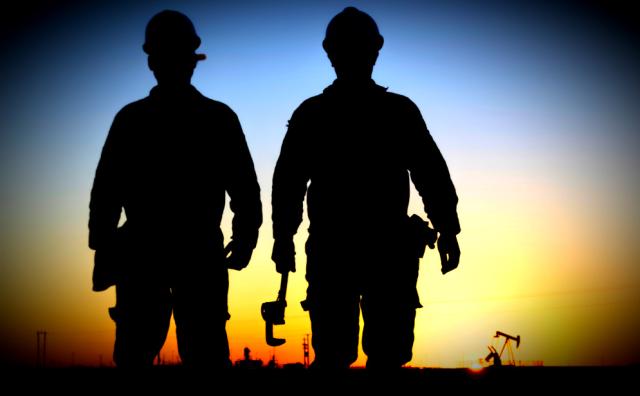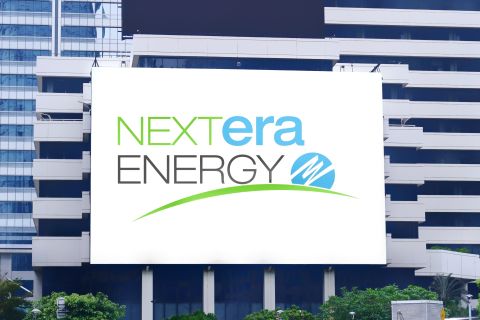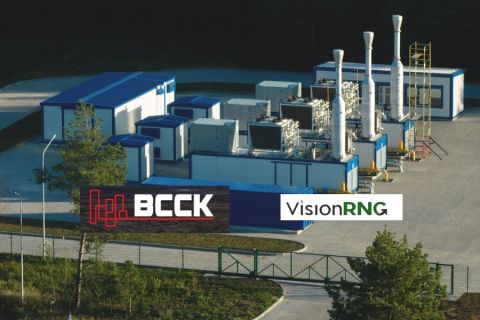
More funds and firms are looking around and getting ready to tackle new business in the oil and gas industry this year. Finally, writes Executive Editor-at-large Leslie Haines in her monthly column for Oil and Gas Investor. (Source: Shutterstock.com)
Presented by:

[Editor's note: A version of this story appears in the February 2021 issue of Oil and Gas Investor magazine. Subscribe to the magazine here.]
Lately it seems my inbox is full of more news about the so-called energy transition and alternative energies than about oil and gas, the latter of which has been in a sort of COVID-19-induced, low-oil-price lull anyway. Admittedly, once you click on some topic like the energy transition, you start getting inundated. For example, we learned that New York just selected Equinor to provide the state with offshore wind power, in one of the largest renewable energy procurements seen in the U.S. to date. BP is a partner.
After the traumas of 2020, we see some positive signs in traditional oil and gas, although we are not naïve enough to think the industry will have smooth sailing from here on. The price of oil has recovered fairly well, although it’s anybody’s guess what lies ahead. LNG prices in Europe and Asia are soaring, which we hope will backstop U.S. gas producers this year. (Gas-focused producer and NGL exporter Range Resources Corp. already has been cited as the U.S. E&P whose stock rose the most last year.)
The oil and gas activity index in the 10th Federal Reserve District (this includes northern New Mexico, Colorado, Oklahoma and other energy-producing regions), jumped from 4 to 40 in fourth-quarter 2020, suggesting that a recovery has started, according to the Federal Reserve Bank of Kansas City in its quarterly survey of energy executives. Respondents told the bank they think drilling activity “will increase sharply” when oil and gas prices average $56 per barrel and $3.28 per MMBtu.
Other good news in the patch is:
Item One: In January, Halliburton revealed it had deployed the industry’s first electric fracturing equipment—not diesel, not natural gas with their attendant emissions.
These new frac jobs were done for Cimarex Energy Co. on several wellpads across Culberson and Reeves counties, West Texas. Halliburton said it completed almost 340 stages across multiple wells using this new power source, electricity from a utility.
“Grid-powered electric fracturing offers an alternative path to achieving the lowest emissions profile possible compared to both turbines and Tier 4 dual fuel engines,” the company said. “Grid-powered electric fracturing also offers additional operational reliability and requires a lower capital outlay compared to turbines. Delivering a grid-powered fracturing solution is an example of Halliburton’s commitment to leading in the energy transition by helping customers achieve lower emissions.”
Cimarex vice president, Permian Business Unit, Michael DeShazer, commented in the Halliburton release, noting how this new frac method fits Cimarex’s ESG strategy. “Cimarex has focused its infrastructure investment on creating operational efficiencies and reducing emissions, including ownership of the electrical grid on our Culberson and Reeves County acreage. These investments are enhanced by Halliburton’s grid-powered fracturing operation.”
A bonus to this environmentally friendly development: Halliburton’s electric frac equipment is designed to allow its customer to achieve pumping performance that is 30% to 40% higher than with conventional equipment. Who could argue with that?
Item Two: We all know that the U.S. has done a masterful job in reducing its emissions thanks to increased use of natural gas and far less use of coal-fired power. In the API’s annual state of the industry presentation, CEO Mike Sommers said emissions related to production have declined 70% in five of the largest producing regions from 2011 to 2019, according to data from the EPA and EIA. That’s commendable.
Item Three: Rystad Energy announced that gross gas flaring from Permian Basin wells has fallen to a modern low. Only 1.6% of the basin’s gas production was flared in fourth-quarter 2020. That’s impressive—yet it still amounted to about 390 MMcf/d, during an industry lull no less. If companies can continue to tackle this, we’ll all be the better for it, and that gas can be monetized. Rystad said in the second half of last year, of the 45 largest E&Ps in the basin, 20 had a flaring intensity of 1.2% and below.
Item Four: Despite the reluctance of private equity funds to commit new capital to new teams, some deals are happening. Several people we’ve spoken with lately say today is one of the best times to invest that they’ve seen in years, from a risk-reward standpoint.
The latest new deal? Industry veteran (and one of our 25 Influential Women in Energy) Claire Farley is back, this time to helm ARM Resource Partners LLC, a start-up that will acquire passive, nonoperated interests across the Lower 48, including minerals and royalties. The new firm is backed by Greg Davis’ private equity firm, EIV Capital LLC, and ARM Energy Holdings LLC, a longtime adviser in the upstream and midstream.
More funds and firms are looking around and getting ready to tackle new business this year. Finally.
Recommended Reading
NextEra Energy Dials Up Solar as Power Demand Grows
2024-04-23 - NextEra’s renewable energy arm added about 2,765 megawatts to its backlog in first-quarter 2024, marking its second-best quarter for renewables — and the best for solar and storage origination.
BCCK, Vision RNG Enter Clean Energy Partnership
2024-04-23 - BCCK will deliver two of its NiTech Single Tower Nitrogen Rejection Units (NRU) and amine systems to Vision RNG’s landfill gas processing sites in Seneca and Perry counties, Ohio.
Clean Energy Begins Operations at South Dakota RNG Facility
2024-04-23 - Clean Energy Fuels’ $26 million South Dakota RNG facility will supply fuel to commercial users such as UPS and Amazon.
Romito: Net Zero’s Costly Consequences, and Industry’s ‘Silver Bullet’
2024-04-22 - Decarbonization is generally considered a reasonable goal when presented within the context of a trend, as opposed to a regulatory absolute.
Energy Transition in Motion (Week of April 19, 2024)
2024-04-19 - Here is a look at some of this week’s renewable energy news, including the latest on global solar sector funding and M&A.





